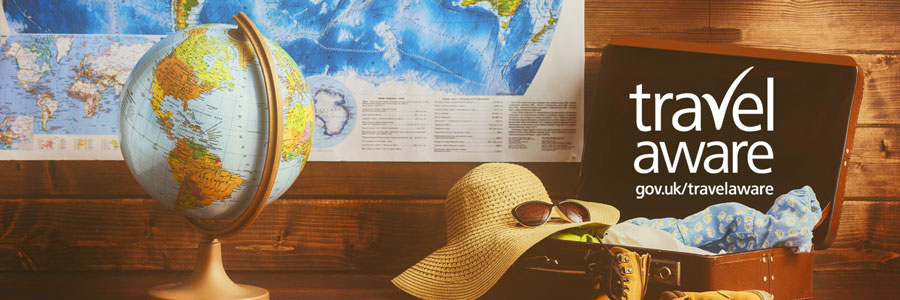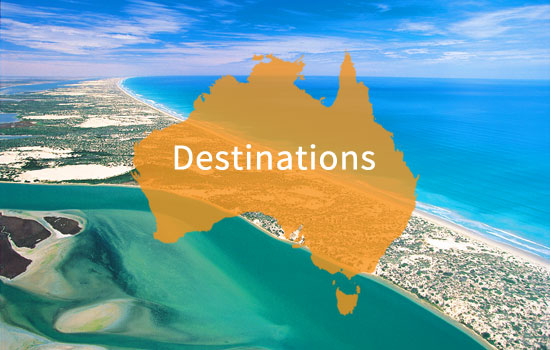Natural Australia
Great whites and redbacks and crocs, oh my...Skiing in Kosciuszko National Park, Snowy Mountains, NSW. Photo credit: Sally Mayman, Destinaation NSW
Natural Australia
The lethal power of some of Australia’s natural residents is legendary.
Of the world’s ten deadliest snakes, eight (or possibly all ten, depending on who you read) are Australian. Australia boasts the deadliest spiders, octopus, fish and jellyfish in the world. And then there are the sharks and crocs.
But for all such doom-laden facts, one is perhaps most important of all. The horse is Australia’s deadliest animal. The National Coroners Information System records 36 horse deaths between 2000 and 2006. 20 people died of cow related injuries, while the third most dangerous killer in Australia is the domestic dog.
Australia may practically pulse with venom, but you’re almost as likely to be killed by your cat as you are by a redback.
Still, as your mum would say, if you’re travelling Australia there’s no harm in being prepared…
From the air
Magpies (no, really)
Magpies have their young between August and November and become very protective. They’ll attack anything they see as a threat, especially cyclists – and they do love to target the eyes. If you’re planning to travel Australia by bike during these months, paint a false pair of eyeballs on your helmet. It works, and it’s worth it.
On the land
Spiders
Australia’s spiders are, in general, not especially aggressive and not especially venomous either. Australian tarantulas look scary but bites are rare and the effects aren’t long-lasting. The garden orb weaver spider is the most common source of bites but the effects are localised soreness rather than anything more severe. And the huntsman may be the biggest of Australia’s spiders (and scary as hell when you startle one by accident) but they rarely bite – and they’re not dangerous when they do.
Some of Australia’s spiders are harmful and one or two are actively aggressive. So, if you’re bitten by a funnel-web, redback or mouse-spider, or you think you may have been, seek immediate medical attention. For other spider bites, an ice pack will relieve the pain.
Snakes
Snake bites can be fatal but few are thanks to anti-venom and, in most cases, the extremely limited chance of you encountering the deadliest species. Species such as the inland and coastal taipans may be hideously venomous, but tend only to be found by those actively looking for them. There are a couple of exceptions:
• Eastern brown snake: Common through the eastern half of mainland Australia, and responsible for more snake deaths than any other snake species. Aggressive and common in populated areas – not a good combination.
• Mainland tiger snake: Particularly common in Melbourne, but found wherever you travel Australia’s eastern coast and Tasmania Bites are fatal if left untreated.
In the water
Stonefish
Found in northern waters, from Brisbane to north of Perth. Looks like a stone – hence the name – which makes it difficult to spot. You’ll know all about it if you stand on one, though. Effects of a sting can include paralysis and death – seek immediate medical attention.
Jellyfish
It doesn’t matter where you’re travelling in Australia; nowhere’s jellyfish-free, although most of the nastiest examples (box and irukandji jellyfish) and most stings occur in the shallow, tropical waters of the north, from Geraldton in WA to Bundaberg in Queensland.
In general, most jellyfish stings are severely painful and unpleasant but not long lasting (although see below). Some can induce vomiting. Remember that the trailing tendrils of a jellyfish can continue to sting even when separated from the main body, so getting a victim out of the water may not be enough to prevent them being stung further.
Irukandji stings cause initial mild irritation, which can rapidly develop into severe pain, nausea and even a sense of impending doom (quite understandable, given that heart failure and death can also result). The sting of a box jellyfish and its relatives can stop breathing, cause cardiac arrest and death.
Between October and May all unprotected tropical waters could contain jellyfish. Ignore warning signs and you’re effectively playing Russian roulette.
You can find more on marine stingers, including first aid treatments here.
Blue ring octopus
There are popular misconceptions that blue ringed octopuses are a) confined to Australia’s southern waters and b) blue ringed. Neither is necessarily true. They’re found throughout Australian waters in rock pools and underwater crevices. And a number of the species are actually yellowish with brown rings, which only change to blue when alarmed.
Fearsomely venomous, but fortunately rarely encountered unless you’re actively looking for them.
Sharks
It’s easy to get rather hysterical about the threat of sharks. All the most notorious species inhabit Australia’s coast, including great whites, tiger sharks, bull sharks and hammerheads. Yet it’s also worth remembering that the chances of an encounter with a dangerous shark on your Australian travels are about as great as your chances of a sizeable lottery win.
That said, bull sharks in particular do have a bit of a reputation. They tend to lurk in fairly shallow water, especially estuaries, and can lash out at the cause of any splashing nearby. If there are bull shark warning signs about, heed them!
Always stay alert in the water, and if you notice other marine life acting unusually get out of it.
Crocs
The north of Western Australia, the Northern Territory and Queensland are the prime territories for crocodiles. The estuarine crocs (known as ‘salties’) are larger, more aggressive and considerably more dangerous than their freshwater cousins (although freshwater crocs are hardly harmless – they’re just a little less quick to anger than a saltie).
Salties are the world’s largest reptile and kill a handful of people in Australia each year. There are lots of them around too. They fish around 200 out of Darwin harbour every year. On a trip to Yellow Waters we were told you’ll only ever see about 10% of all the crocs present in a particular area. Ominous…
Confusingly, salties have been known to venture into freshwater areas – so just because it’s not saltwater, doesn’t mean it’s not a saltie.
Don’t expect to find them confined to the water either. Salties can travel surprisingly long distances overland, especially when the waters are receding after the wet season. They can turn up anywhere, which is why we didn’t venture into any swimming holes in the Top End!
An aboriginal guide once told us that her sister was caught off guard by a saltie hiding in a storm drain (a common occurrence). She survived the experience, but was badly bitten. If a local can be caught unawares the message is clear: if you’re travelling Australia’s north, be on your guard.
Wild Australia
More than 80% of Australia’s flowering plants, mammals, reptiles and frogs are unique to the country.
Australia is home to 140 species of marsupials, including koalas, wombats and kangaroos.
There are an estimated 40 million kangaroos in the country… …and 750,000 camels, giving Australia the highest concentration of wild camels anywhere on earth.
Australia has around 800 species of bird, roughly half of which are unique to the country.
Monotremes are found only in Australia. The animal group includes echidnas and duck-billed platypuses.
You May Also Be Interested In…
Show Me Australia
View our Australia destinations
Fascinating Reads
Top tips and quick reads about Australia
Ask, Answer or Browse
Search the forum or ask a question
Subscribe To Our Newsletter
Get the latest travel tips and info straight to your inbox.





